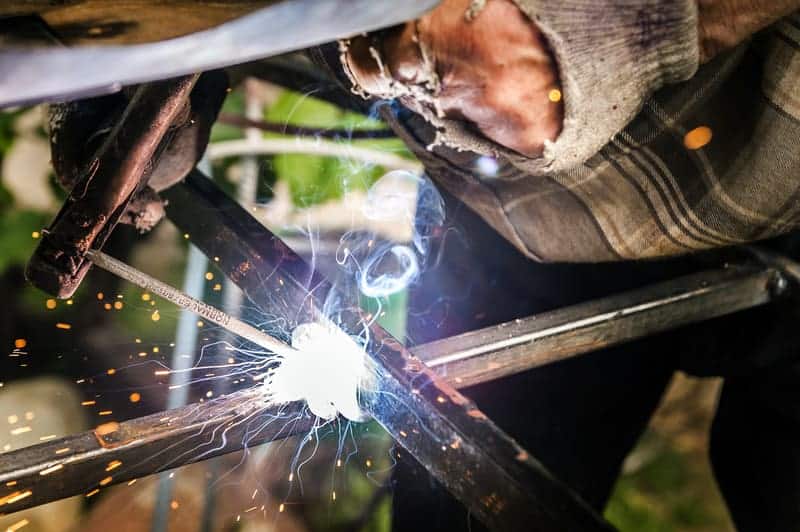“This post contains affiliate links, and I will be compensated if you make a purchase after clicking on my links.”
Stick welding, or SMAW (Shielded Metal Arc Welding), is easily one of the world’s most common and popular welding methods. In addition, the simplicity of stick welding often makes it a more accessible choice compared to either MIG or TIG welding.
There are various reasons why stick welding is so popular, including price, ease of use, and the fact that stick welding requires no shielding gas, unlike MIG or TIG, which makes it ideal for outdoor welding where the wind is a significant issue.
Mild Steel can be stick welded with E60 and E70 rods. Amperage settings are between 25 A and 50 A per 1 mm diameter of the electrode. Stick welding is ideal for beginners, repair and outdoor welding.
In the following guide, we’ll cover:
- What is Stick Welding (SMAW)?
- Advantages and Disadvantages of Stick Welding
- Safety Equipment Required for Stick Welding
- Setting Up Your Stick Welder
- Choosing An Electrode
- Laying Your First Weld
- Common Mistakes, Trouble Shooting, and FAQ
With any type of welding, practice makes perfect. The more stick welding with mild steel, the better your welding will get before you tackle any project or repair, set up some scrap mild steel, and practice laying down some beads.
Another good idea if you plan on doing a lot of repetitive jobs is to write down your settings in a diary. This way, you’ll be able to refer back to your written notes if you need to weld the same things again. If you have to do a series of welds over and over, then writing them in chalk on your workbench is a great visual aid until you remember them.
Over time, welding becomes entirely instinctual, and you’ll immediately be able to get close to your preferred settings. Once close, it’s only a matter of dialing them in and fine-tuning the settings to get them perfect. Remember, practice makes perfect, and it’s particularly true with welding.
1. What Is Stick Welding (SMAW)?
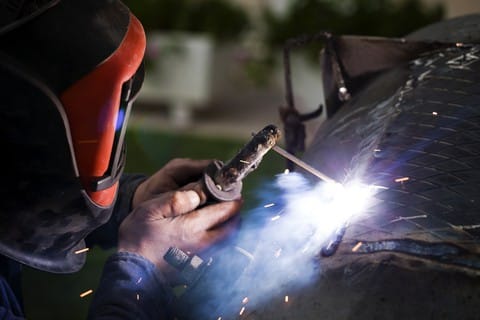
The stick welding process involves striking an electric arc between your metal electrode and the piece of metal you are attempting to weld. The electric current passes down through the electrode where it makes contact with the material being welded and melts the end of the electrode, forming a weld pool of molten metal.
Unlike MIG and TIG welding, which uses a shielding gas to protect the weld pool, stick welding uses a layer of flux on the electrode, which melts and protects the weld pool while you are welding. However, once the weld starts to cool, the flux forms a layer of slag on top of the weld, which needs to be either brushed, chipped, or removed by hand. You can usually tell when you have your stick welding settings dialed in because the slag will lift off the weld and fall away quickly.
2. Advantages and Disadvantages of Stick Welding
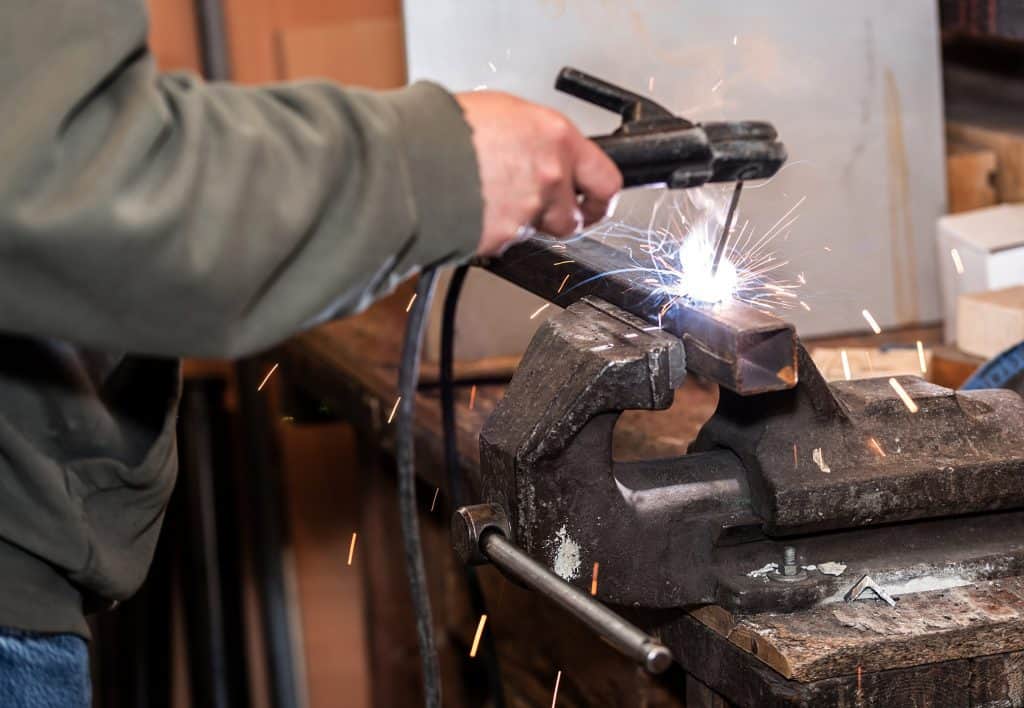
In this section, we will look at some of the advantages and disadvantages of stick welding mild steel. Obviously, there are always some people that prefer one welding process over another, but in this article, we’re focusing on stick welding mild steel.
Advantages of Stick Welding Mild Steel
- Portable – Stick welding is a very portable way to weld something. A small stick welder can work well even on thick mild steel, and you don’t need to carry around shielding gas or a wire feeder. In addition, a stick welder is easy to use even in some of the world’s most remote locations.
- Great Outdoors – Because stick welding doesn’t require any shielding gas, it’s perfect for outdoor conditions, and you can even lay a weld in the wind if required. It’s almost impossible to MIG or TIG weld in windy conditions.
- Easier – Many people consider stick welding to be easier to master than TIG welding, but it still requires some skill to start laying down high-quality welds.
- Less Pre-Cleaning – If you had to, you could stick weld on mild steel that had surface rust or even mill scale. However, to get a high-quality weld, cleaning the metal as much as possible is still advised.
Disadvantages of Stick Welding Mild Steel
- Requires Some Skills – While MIG welding may appear more complicated, getting a high-quality weld using a stick welder is considered quite challenging for an inexperienced welder.
- More Mess – When you are stick welding, you’re going to notice that there is much more spatter and slag, which will need to be removed once welding is completed.
- Less Intricate – Stick welding isn’t going to produce the same intricate or neat weld that TIG welding or even MIG welding will.
3. Safety Equipment Required for Stick Welding
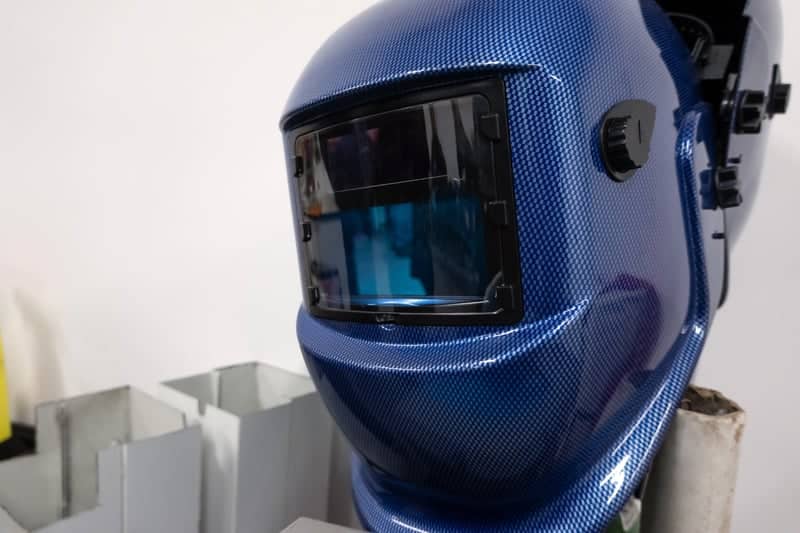
One of the first things that you need to consider, regardless of what welding technique you’re choosing to use, is your safety. Therefore, the first thing that you should do is carefully read the operating instructions which come with your stick welder, as not all welders are precisely alike.
When you are welding, you are going to be exposed to heat, fumes, and ultraviolet rays from the welder. Specially designed welding gloves and fire retardant clothes are great for protecting your body from heat and burns. You can also get a welding apron or jacket, welding spats, and safety boots.
Safety glasses and a welding shield will protect your face and eyes while welding. Whenever possible, all welding should be conducted in a well-ventilated area. An exhaust fan is the best way to ensure that any hazardous welding fumes are removed.
4. Setting Up Your Stick Welder
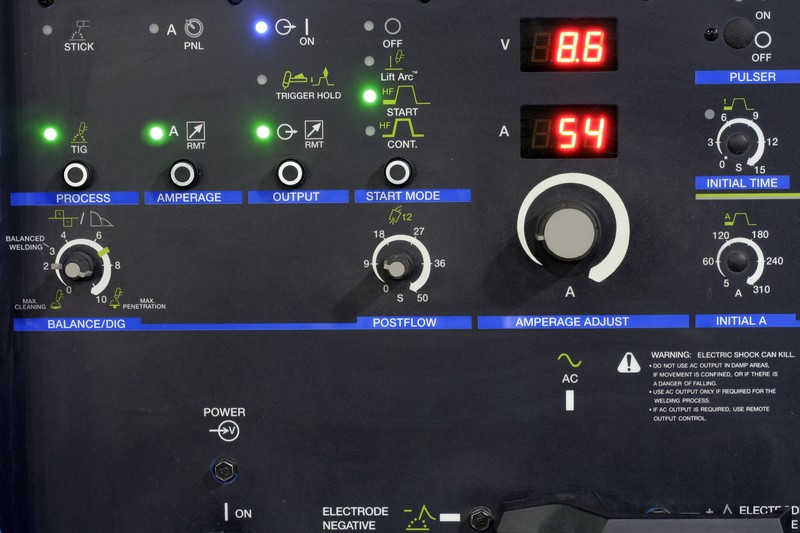
The first thing that you should do whenever you’re using a stick welder, or any new welder for that matter, is carefully read through the operating instructions and follow the steps to get it set up correctly.
You have a few options when it comes to choosing a welder. You can either choose a multipurpose welder which does stick, MIG, and TIG, or buy a stick welder only, which is a lot cheaper. Of course, the quality of the stick welder will depend on how much money you are willing to spend on it.
Below we’ll cover some of the different components which will come with your stick welder:
- Stick Welding Machine – Some are welders are about the size of a large shoebox. They will have a power cable that plugs into a power source, an earth or ground cable which attaches to the workpiece, and a torch or handset which holds the electrode.
- Ground Clamp – The ground clamp or earth plugs into your welder and then clamps to the piece that is being welded.
- Handset – The handset will plug into the stick welder and hold the electrode. When your welder is on and set up, the electrode touching the workpiece will complete the circuit and form an arc.
- Slag Removing Tools – Slag removing tools include a chipping hammer or wire brush.
5. Choosing An Electrode
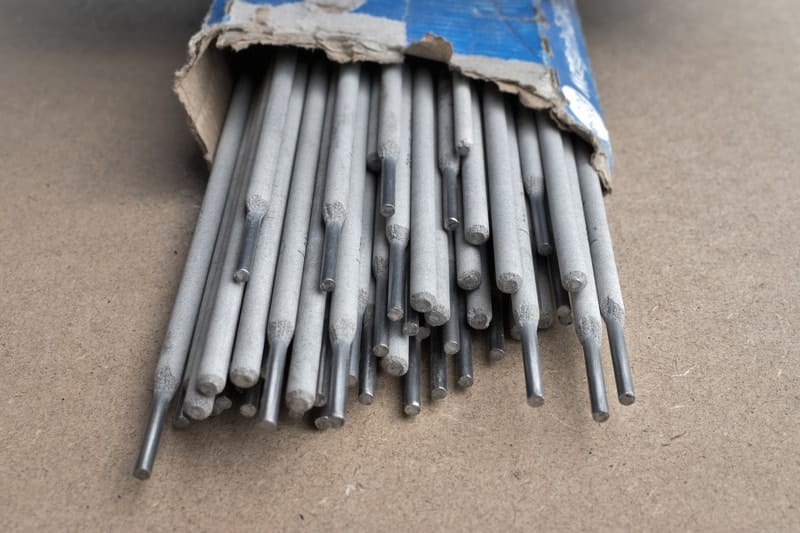
Choosing an electrode isn’t always easy because there are hundreds to choose from, so you need to choose the one best suited to welding mild steel or whatever it is you’re welding. The most popular welding electrodes or ‘rods’ are 6010, 6011, 6012, 6013, 7014, 7024, and 7018.
When you are welding any mild steel, the E60 or E70 series electrode will do the job, but if you’re looking for a premium electrode, then the 7018 and 6013 are a great choice.
- The first two numbers represent the tensile strength of the electrode, for example, 60 = 60,000 PSI.
- The third number is what position the electrode can be used in. Number one means any position, while number two means flat position welding only.
- The fourth number is what type of current you should use, for example, DCEP, AC, or DCEN, and also the coating on the electrode.
6. Laying Your First Weld
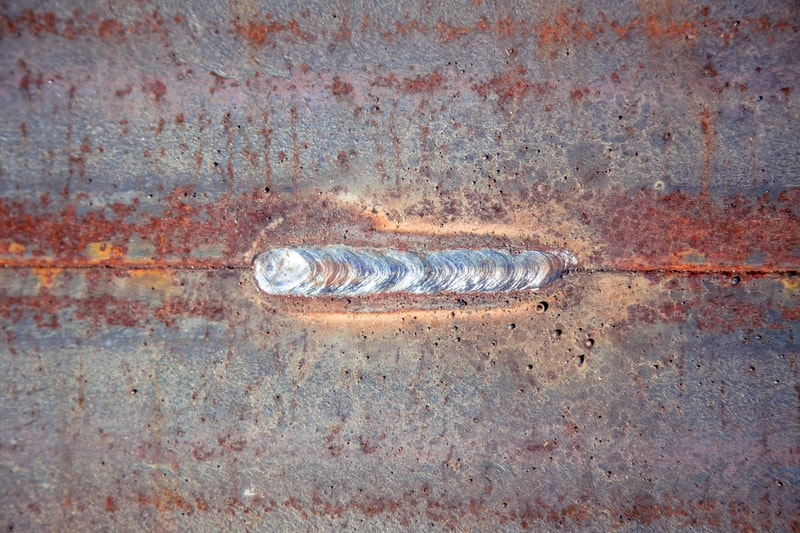
Once you have everything set up, you’ll be ready to lay your first weld. Again, practicing on a piece of scrap is a good way to get your settings dialed in before moving onto the main project.
To strike an arc, place the tip of the electrode onto the metal and quickly drag it across the mild steel as if you were lighting a match. If the arc is struck, gently pull the arc slightly away from the metal and then push it across the mild steel where you want the weld to be. If the electrode sticks to the workpiece, give it a slight twist. If the arc drops out, it’s because you lifted it too high from the workpiece.
Once the arc is struck, you should gently drag it along the joint or piece to be welded at a 15-30 degree angle. Stick welding is the opposite of MIG welding, where you push the weld pool; with stick welding, you slowly pull the electrode back towards you.
You’ll need a steady hand with stick welding, so make sure that you get comfortable before you begin each run.
7. Common Mistakes, Trouble Shooting, and FAQ

When you first start welding, it’s not uncommon to run into some trouble. In this section, we’ll cover some of the more common mistakes.
- Too much spatter – The most common cause for too much spatter is having your arc too long. The tip of the electrode should be just above the workpiece. You could also have your amperage set too high.
- Porosity in the weld – The biggest cause of porosity in your weld is having your electrode at too much of an angle.
- Undercut – If you have an undercut along the toe of the weld, it could be caused by having your amperage too high. Try turning it down to reduce undercut along the weld.
- Thin weld bead – The ideal width of the weld bead should be 2.5 times the diameter of your electrode. If your weld bead is too narrow, try slowing down your travel speed.
- Lumpy weld bead – If your weld bead is too lumpy, it means that your travel speed is too low or you are jerking the electrode around too much. Try moving the electrode a little faster and smoother to smooth out your weld bead.
- Trouble striking an arc – If you can’t strike an arc, it could be because the amperage is too low. Try turning up the amperage. If you’re still having trouble, check and ensure that the earth or ground clamp is getting a good connection to your workpiece.
How To Stick Weld Mild Steel – Conclusion
No matter what type of welding you’re doing, it will take time and practice to get the hang of it before you’re laying down a perfect weld every time. Even an experienced and highly trained welder can struggle with their welding machine, machine settings, material, or consumables at some time in their life.
Stick welding mild steel is one of the easiest ways to learn to weld. Mild steel is a forgiving metal that is great for practicing on. Stick welding or arc welding, while not as easy as MIG welding, is relatively easy and suitable for a variety of different conditions both indoors and outdoors.
If you are planning on learning to weld or welding a component for the first time, always practice on some scrap mild steel before attempting to weld the main project. Practicing on similar metal that’s close to the same thickness will allow you to dial your settings in before moving on to the main project and could save you from destroying whatever it is that you are trying to repair.
When it comes to structural repairs or repairs on items that will be under load and immense pressure, then it’s a good idea to speak to a qualified welder about making any repairs. The last thing you want is something that you welded to fail under pressure and possibly harm someone. If you have any questions about welding mild steel with a stick welder, please don’t hesitate to reach out and contact me directly.

